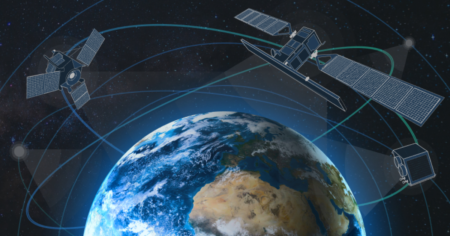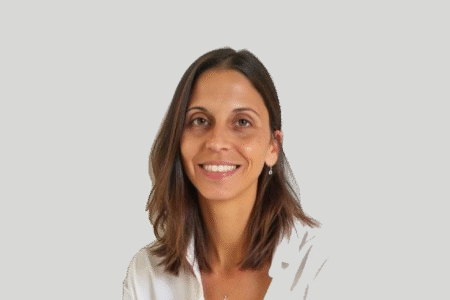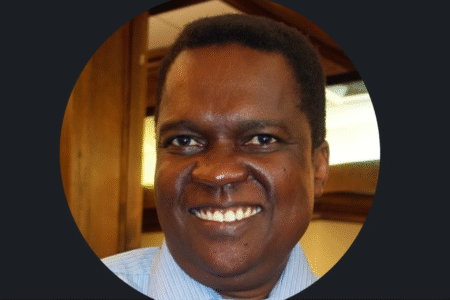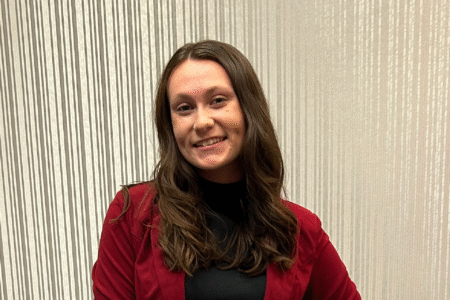Green Success Stories puts Maksym Sushchuk, Senior Content Writer of EOS Data Analytics in the Green Spotlight. EOSDA is a Ukranian firm that provides satellite-based solutions for decision making in agritech and environmental management. We discussed the sustainability success stories of EOSDA, especially in light of the war, and how despite it all their team keeps faith in the common good, even in the face of so much tragedy.

Tell us about your sustainability journey and how the war in Ukraine is impacting your efforts.
In our company, most of our employees are located in Ukraine. With everything happening in Ukraine, our sustainability journey has been quite an adventure lately. When the full-scale invasion started, many of us had to scatter across the country, and some went abroad to keep their kids safe. Some of our colleagues joined volunteer movements, while others were conscripted. It’s hard to keep faith in the greater good with so many tragedies around if you don’t feel yourself immediately helpful. So it’s been tough, but our R&D and Marketing teams are still based in Ukraine and we all have stayed committed to our mission.
At the same time, sustainability has never been more important for our Ukrainian farmers. With the skyrocketing costs of gasoline, fertilizers, and transportation, they can’t afford to risk losing their harvests. This urgency has pushed us to focus even more on sustainable farming solutions. For example, there’s the Soil Organic Carbon Modeling Service we’ve been working on lately. It’s a crucial part of fighting climate change and ensuring a sustainable future, and we’re looking forward to making tangible strides in this regard.
Tell us a bit about the product or solution you offer.

At EOS Data Analytics (EOSDA), we provide comprehensive satellite-based solutions to enhance decision-making in agriculture, forestry, and environmental management. Our flagship products include EOSDA Crop Monitoring, EOSDA LandViewer, and specialized custom agritech solutions.
EOSDA Crop Monitoring is an online satellite-based precision agriculture platform for field monitoring. It offers features such as crop health assessment, weather analytics, and historical data analysis. This tool helps farmers optimize their field management practices, reduce costs, and increase yields. The platform also includes field productivity analysis to help users assess the effectiveness of their agricultural practices over time.
EOSDA LandViewer is a sophisticated geospatial platform designed for access to satellite imagery and geospatial data. It allows users to visualize changes in the Earth’s surface over time, perform detailed analyses using various indices, and create custom reports. LandViewer’s intuitive interface and robust data processing capabilities make it an indispensable tool for researchers, planners, and environmentalists.
Additionally, our custom agritech solutions cater to specific needs in agriculture and environmental management. These solutions include yield forecasting, irrigation management, and pest detection, designed to address unique challenges faced by our clients. Our latest innovation, the Soil Organic Carbon Modeling Service, provides detailed mapping and modeling of soil organic carbon stocks, crucial for enhancing soil health, improving agricultural productivity, and mitigating climate change.
By integrating advanced satellite technology with AI-driven analytics, EOSDA empowers users to make informed decisions that promote environmental stewardship and agricultural efficiency.
Tell us more about your sustainability efforts.
At EOS Data Analytics (EOSDA), our commitment to sustainability is reflected in every facet of our operations, from the development of our cutting-edge satellite imagery solutions to our active engagement in impactful environmental projects worldwide.
Our sustainability efforts are guided by a core belief in the power of data to inform and inspire action. For instance, our work with the Pulitzer Center journalist, Choon Chuyan Low, unveiled the hidden deforestation in Malaysia, providing critical data that highlighted the environmental and social impacts of illegal logging. This investigation revealed the alarming deforestation rates and the associated carbon emissions, thereby drawing public and governmental attention to the issue and fostering meaningful discussions on sustainable land use practices.
In another significant project, we collaborated with the Saamaka community in Suriname, utilizing our satellite data to document deforestation caused by illegal logging. This data has empowered the Saamaka people to defend their ancestral lands, demonstrating how our technology can support indigenous communities in their fight against environmental degradation.
Through initiatives like these, and many more, we aim to not only provide high-quality satellite data but also to enable communities, journalists, researchers, and businesses to make informed decisions that promote sustainability. Our ongoing projects continue to underline the importance of using advanced technology to address some of the most pressing environmental challenges of our time, reinforcing our dedication to building a more sustainable future.
Share a green success story with us – how have you helped customers or other businesses in the fight against climate change?
One of our notable green success stories involves our work in Chad, where we helped environmental activist Hindou Oumarou Ibrahim to support indigenous communities through participatory mapping. These communities faced challenges in managing their lands and resources due to the impacts of climate change. By utilizing satellite images from EOSDA LandViewer, we helped create detailed, large-scale maps that combined modern technology with local knowledge.
These maps empowered hundreds of communities, providing a clear framework for managing natural resources and resolving conflicts. For instance, in Mayo-Kebbi Est, communities opened animal corridors and defined agricultural areas, significantly reducing land-use disputes. Women in these communities gained rights to manage land collectively, leading to better land management and increased economic opportunities. This project facilitated sustainable development and promoted resilience against climate change by enabling communities to adapt and thrive.
In our point of view, this collaboration in Chad highlights how innovative solutions can drive meaningful environmental and social change.
What would you do with $1 billion dollars?
If given $1 billion dollars, we would invest heavily in sustainable solutions within the agricultural sector, with a significant focus on carbon solutions. This investment would enable us to expand our current capabilities in monitoring and enhancing soil health through advanced Soil Organic Carbon modeling, ensuring that agricultural practices not only maintain productivity but also contribute to carbon sequestration.
Additionally, we would develop and deploy innovative technologies to support regenerative agriculture, promote biodiversity, and improve water management. These initiatives would help mitigate climate change by reducing greenhouse gas emissions and enhancing the resilience of agricultural systems globally. Our goal would be to create a robust, sustainable framework that empowers farmers and agribusinesses to adopt environmentally friendly practices, ultimately contributing to a healthier planet.
What do you envision your industry looking like in ten years?
In ten years, we envision the agricultural industry to be significantly transformed by the adoption of digital technologies and precision agriculture. The global digital agriculture market is expected to grow robustly, driven by advancements in AI, machine learning, IoT, and satellite monitoring. These technologies will enhance crop monitoring, field mapping, yield prediction, and resource management, leading to higher efficiency and productivity. For instance, the market for automation and control systems in agriculture is projected to see a substantial increase, with a CAGR of 10.55%, reflecting a shift towards more autonomous, technology-driven farming practices.
One of the key drivers will be the integration of satellite and aerial data, which will become indispensable tools for agricultural monitoring. This will aid in addressing critical issues such as food security, environmental sustainability, and climate change mitigation.
The Asia-Pacific region, particularly developing economies like China and India, will see rapid adoption of smart farming technologies, contributing significantly to global market growth. The emphasis on ESG-related practices will also become more pronounced, with farm management systems offering solutions for sustainable and transparent operations.
Overall, the future of agriculture will be characterized by increased precision, sustainability, and technological integration. This evolution will empower farmers and agribusinesses worldwide to make data-driven decisions, ensuring a resilient and sustainable agricultural sector.
What would you like readers to take away from this article?
We hope readers take away a deeper understanding of the critical role that sustainable practices and innovative technologies play in shaping the future of agriculture. By highlighting our projects and solutions, we aim to demonstrate how advanced satellite analytics and precision farming can drive positive environmental and social changes.
We want readers to recognize the importance of adopting sustainable practices in agriculture, not only to enhance productivity and efficiency but also to contribute to global efforts in combating climate change. Our stories of impact and various case studies available on our blog illustrate how technology is already leveraged all around the world to protect and restore natural resources, empower communities, and ensure food security.
Ultimately, we hope this article inspires readers to explore and support sustainable initiatives within their own spheres of influence, fostering a collective movement towards a more resilient and sustainable agricultural sector.
How should readers get in touch with you and/or your organization?
Kudos
Many thanks to Maksym Sushchuk and to EOSDA.
Green Success Stories is happy to support and highlight your efforts! We invite you the reader to do the same.
Support Green Success Stories
We invite you the reader to support Green Success Stories efforts as well:
- Consider our writing and promotional services
- Donate $100 to Green Success Stories via Paypal
- Refer us to others who could use our writing and promotional services
- Suggest other leaders to feature in the Green Spotlight
- Spread the word about Green Success Stories
Thanks for your support.




